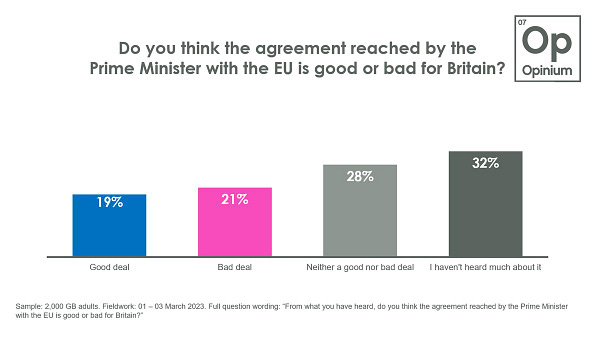Less drama, more consistency: the truth behind current polling trends
Welcome to the latest edition of The Week in Polls which is a return to my editorially self-defeating streak. Normal editions usually have an undertone of ‘but look at all the interesting things in the details’. Ones like this, however, have an undertone of ‘but look, things are much simpler and changing less than everyone is making out’.
So, prepare to be bored… (and I know you’re smart enough not to be put off by that).
As ever, if you have any feedback or questions prompted by what follows, or spotted some other recent polling you’d like to see covered, just hit reply. I personally read every response.
My privacy policy and related legal information is available here. Please note that if you are subscribed to other email lists of mine, unsubscribing from this list will not automatically remove you from the other lists. If you wish to be removed from all lists, simply hit reply and let me know.
If you’d like more news about the Lib Dems specifically, sign up for my monthly Liberal Democrat Newswire.
Less drama, more consistency: the truth behind polling trends
In many ways politics in the last few months has been exciting, volatile and unpredictable. The absurdity of Matt Hancock handing over a treasure trove of private messages to an ardent opponent of his signature policy, perhaps. Or the insouciance of a journalist once again failing to protect information given to them confidentially - and that’s just all in the one story.
But take a look at this boringly predictable graph from YouGov:
Massively unpopular government stays consistently massively unpopular.
There has been a bit more variation in Rishi Sunak’s ratings, but take a step back and again it’s a picture of unpopular government staying unpopular, even after the Windsor Agreement:

There has been a bit of a rise in Sunak’s own ratings, but:

Sunak is polling better than his party, but the gap between him and his party has narrowed due to him sinking towards his party rather than due to him raising up his party:
Drama in recent polling can only be found if you exuberantly over-interpret movements within the margins of error and flavour with a pinch of journalistic cliches:
Movements within the margin of error that leave you behind by a landslide margin are not, in my book at least, a “huge poll boost”.
(The poll behind the story, it should be said, is a legit poll by a respectable pollster. The pollster’s own weekly email reported the poll in reasonable terms.)
One reason for the sedate boring predictability of the big polling picture is that even as important a story as the Windsor Agreement hasn’t really grabbed the attention of the public. A Redfield & Wilton Strategies poll for Politico found 48% of people have not heard or read about it “at all” with a further 16% only having done so slightly. YouGov found that 72% of people had either not heard of it or had heard of it but weren’t following the story closely. Or take Opinium’s findings:


But of course there are plenty of people with an incentive to try to make things sound more exciting and more volatile, whether for journalistic, political or social media algorithm reasons. (And it’s ok, I promise I’ll return to finding something that is exciting or volatile next week.)
One such person this week was Conservative strategist Isaac Levido, presenting polling to an awayday for his party’s MPs. Understandably, he wanted to give them some signs of hope in the polls.
And at first blush, his figures may sound convincing:

10-15% doesn’t sound that high, perhaps. But let’s apply some context.
“Only” 10% of Conservative voters in 1992 switched to Labour in 1997. Yet 1992 was (narrowly) a Conservative victory and 1997 was (not at all narrowly) an almighty Labour landslide.
(Those figures come from Explaining Labour’s Landslide by Worcester and Mortimore, using MORI data. Other calculations with other data come to similar, if slightly higher, figures.)
So that 10-15% that Levido was talking about was not so much “only” 10-15% but a “landslide-triggering, seat-losing, fear-inducing” 10-15%. It’s a figure that fits with what the public national voting intention polls tell us.
It’s possible that things may change, and there are good reasons to carry on giving that picture a sceptical doing-over to search for signs that they are.
But so far, the story isn’t one of poll boosts for Sunak or low levels of switching to Labour. It’s of a polling steady state, heading towards disaster for the Conservatives.
National voting intention polls
Here’s the latest from each currently active pollster:
For more details and updates through the week, see my daily updated table here.
Last week’s edition
The long term liberalising of Britain.
Know other people interested in political polling?
First polling in the SNP leadership race and other insights from this week’s polling…
Keep reading with a 7-day free trial
Subscribe to The Week in Polls to keep reading this post and get 7 days of free access to the full post archives.






